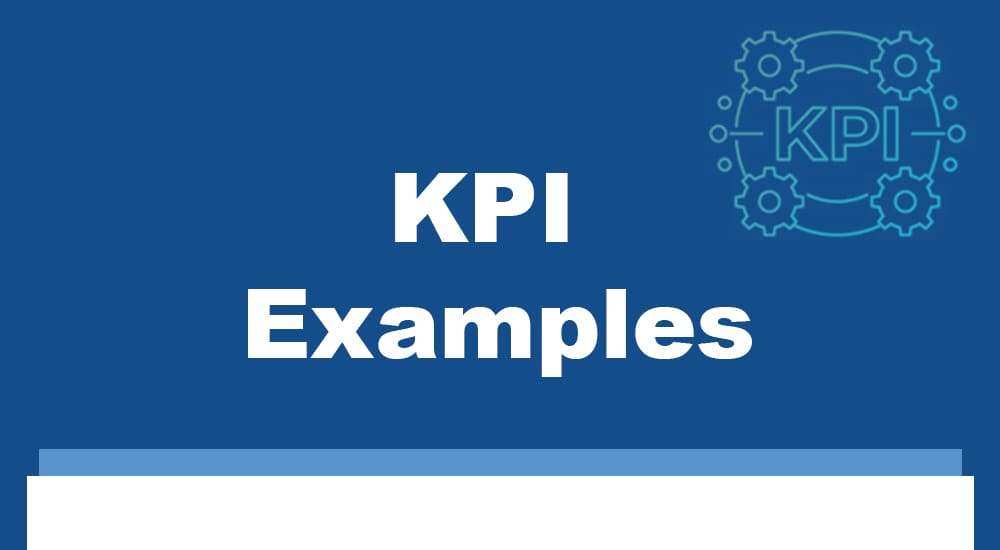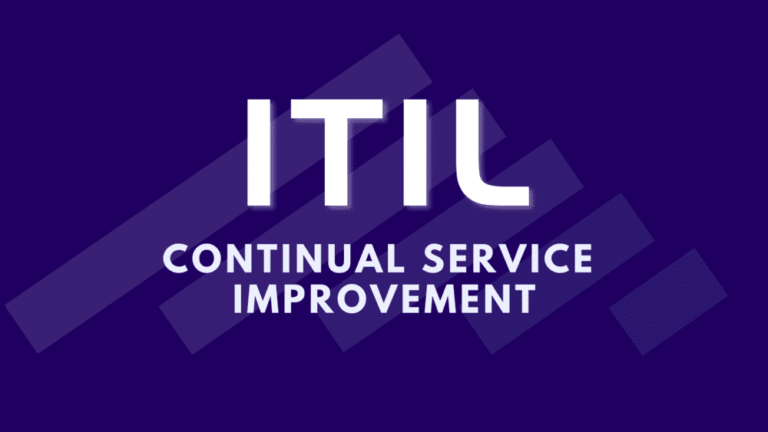I have provided important key performance indicator examples for popular departments in this post. You can visit the sections given in this post to visit the KPI examples you want to refer.
Before we discuss the KPI examples, let’s understand the KPIs
A KPI is a metric that you can use to measure the success of a business. It can be anything from customer satisfaction to website traffic. To improve performance, you need to know and track KPIs regularly.
KPI stands for Key Performance Indicator. It is a quantifiable measure to assess an organization’s success in meeting specific goals. A KPI helps organizations measure and track progress toward specific objectives.
KPIs can be of many types, but they all provide insights into whether an organization meets its goals. Effective KPIs must be SMART (Specific, Measurable, Achievable, Relevant, and Time-bound).
KPIs by Sections or Department
I have grouped the KPIs according to their department and sorted them alphabetically.
- Customer Service/Support Department
- Finance Department
- Human Resource Department
- IT Department
- Management
- Marketing Department
- Operations/Production Department
- Project Management
- Research and Development (R&D) Department
- Sales Department
- Social Media
Now, we will see the examples of KPIs under each department.
Customer Service/Support KPIs
Customer service Key Performance Indicators (KPIs) are essential for assessing the effectiveness and quality of customer support. These metrics help organizations ensure they are meeting customer needs and expectations.
25 key performance indicators examples below show the key customer service KPIs.
- Abandon Rate: This is the percentage of calls abandoned before being answered. This is measured by tracking the number of calls answered within a certain period.
- Average Handle Time (AHT): Measures the average time a customer support agent spends handling a customer inquiry, from initiation to resolution.
- Average Resolution Time: Measures the average time it takes to resolve a customer issue from the moment it is reported.
- Average Response Time: Measures the average time it takes for a customer support team to respond to customer inquiries, whether through email, chat, or other channels.
- Churn Rate: The percentage of customers who stop using the service or product within a given time frame.
- Cost Per Conversation: The average expense incurred per customer interaction in customer support or communication.
- Customer Retention Rate: Customer retention percentage over a specific period indicates customer loyalty.
- Customer Satisfaction (CSAT) Score: Measures customer satisfaction based on a survey or feedback form. Typically, customers rate their satisfaction on a scale.
- Customer Effort Score (CES): Assesses the ease with which customers can resolve their issues. Customers rate their efforts on a scale.
- Customer Feedback: Collects feedback from customers about their support experience.
- Customer Interaction Frequency: Tracks how often customers engage with customer support or other service channels.
- Customer Retention Rate: A percentage indicating the proportion of customers retained over a specific period, reflecting loyalty and satisfaction.
- Customer Satisfaction Rate: This measure shows customers’ satisfaction with the services they receive. It can be calculated by surveying customers and asking them to rate their experience on a scale of 0 to 100.
- Escalation Rate: Measures the percentage of customer issues requiring escalation to higher support levels.
- First Response Time (FRT): The average time taken to provide an initial response to customer inquiries or issues.
- First Contact Resolution (FCR) Rate: Measures the percentage of customer issues resolved on the first contact without needing follow-up.
- Knowledge Base Articles: The total number of informational resources or articles available in a knowledge base, aiding customer self-service and support.
- Net Promoter Score (NPS): Measures customer loyalty and likelihood to recommend the company. Customers are asked to rate their likelihood of recommending on a scale.
- Positive Customer Reviews: The quantity or percentage of reviews expressing favorable opinions about a product or service from customers.
- Quality Assurance (QA) Score: Evaluates the quality of customer interactions based on predefined criteria.
- Repeat Call Rate: This is the percentage of customers who call back after receiving the service. This is measured by tracking the number of customers calling back within a certain period.
- Sentiment Analysis: Assesses the overall sentiment (positive, negative, neutral) of social media mentions.
- Service Level Agreement (SLA) Compliance: Measures the percentage of customer issues resolved within the agreed-upon time frame as per service level agreements.
- Social Media Mentions: Counts the number of times the company is mentioned on social media.
- Ticket Volume: Tracks the total number of customer inquiries or issues the support team receives.
Finance KPIs
Finance Key Performance Indicators (KPIs) are critical for assessing an organization’s financial health, efficiency, and performance.
The 34 essential finance KPI examples are given below.
- Accounts Receivable Turnover: A measure of how efficiently a company collects payments from customers, calculated by dividing net credit sales by the average accounts receivable.
- Asset Turnover: Measures the efficiency of assets in generating revenue.
- Audit Pass Rate: Measures the success rate of financial audits and compliance checks.
- Berry Ratio: A metric assessing a firm’s ability to cover its interest expenses by comparing earnings before interest and taxes (EBIT) to interest payments.
- Budget Variance: Measures the difference between the budgeted and actual financial performance.
- Capital Expenditure as a Percentage of Revenue: Measures the proportion of revenue allocated to capital expenditures.
- Cash Conversion Cycle: The time it takes for a company to convert its investments in inventory and other resources into cash flow from sales.
- Cash Flow: This KPI measures the incoming and outgoing cash of a business. It’s important to track cash flow to ensure the business has enough cash to meet its obligations.
- Compliance Violations: Tracks instances of non-compliance with financial regulations and policies.
- Cost-to-Income Ratio: Measures the proportion of operating costs to total income.
- Current Ratio: Assesses the ability to cover short-term liabilities with short-term assets.
- Days Sales Outstanding (DSO): Measures the average number of days it takes to collect payment after a sale.
- Debt-to-Equity Ratio: Compares the organization’s debt to its equity, indicating its leverage.
- Dividend Yield: Calculates the annual dividend payment as a percentage of the stock’s current market price.
- Earnings Per Share: Calculates the portion of a company’s profit allocated to each outstanding share of common stock.
- Financial Forecast Accuracy: The precision of predicting financial outcomes compared to the actual results, gauging the reliability of forecasting models.
- Forecast Accuracy: Evaluates the accuracy of financial predictions and forecasts.
- Free Cash Flow (FCF): Represents the cash generated after all operating expenses and capital expenditures.
- Gross Profit Margin: The percentage of revenue retained after deducting the cost of goods sold, indicating the profitability of core business operations.
- Interest Coverage Ratio: Measures the ability to cover interest expenses with operating income.
- Inventory Turnover: Evaluates the number of times inventory is sold or used in a given period.
- Net Profit Margin: The percentage of profit remaining after subtracting all expenses, including taxes and interest, from total revenue.
- Operating Cash Flow (OCF): Measures the cash generated by the core operating activities of the business.
- Operating Expense Ratio: Compares operating expenses to total revenue, indicating cost management efficiency.
- Operating Profit Margin: The proportion of revenue left after deducting operating expenses, providing insight into operational efficiency.
- Profit Margins: Evaluate the organization’s profitability, including gross margin, operating margin, and net profit margin.
- Quick Ratio: This KPI measures a company’s ability to pay its short-term obligations with its liquid assets. A high quick ratio indicates the good financial health of a business.
- Return on Assets (ROA) and Return on Equity (ROE): Evaluate the profitability of assets and equity.
- Return on Investment: Calculates the return generated on an investment relative to its cost.
- Revenue Growth Rate: Measures the percentage increase in total revenue over a specific period.
- Value at Risk (VaR): Assesses the potential loss in the value of a portfolio due to market risk.
- Volatility Index: Measures the level of financial market volatility.
- Working Capital: This KPI measures the difference between a company’s assets and liabilities. It’s a good indicator of a company’s financial health and ability to meet its short-term obligations.
- Working Capital Ratio: A measure of a company’s short-term liquidity, calculated by dividing current assets by current liabilities, indicating the ability to cover short-term obligations.
Human Resource KPIs
Human Resource (HR) Key Performance Indicators (KPIs) are essential for assessing the efficiency, effectiveness, and overall performance of HR functions within an organization.
The 48 examples of HR KPIs are as follows:
- Absenteeism Rate: Measures the percentage of workdays missed by employees. A high absenteeism rate can indicate several issues, such as a lack of engagement or poor health.
- Advertising Cost per Hire: Tracks the cost of recruitment advertising per new hire.
- Applicant Satisfaction: Gathers feedback from job applicants about their experience with the recruitment process.
- Benefits Participation Rate: Measures the percentage of eligible employees participating in company benefits.
- Cost per Hire: Measures the average cost of hiring a new employee.
- Diversity Index: Measures the level of diversity within the organization.
- Education and Training: This KPI measures the education and training employees receive. You can create a more skilled workforce by ensuring employees are well-educated and trained.
- Employee Assistance Program (EAP) Utilization: Tracks the usage of EAP services.
- Employee Engagement Survey Results: Measures employee satisfaction, motivation, and commitment.
- Employee Productivity: A measure of individual or collective output relative to input, assessing the efficiency of workforce performance.
- Employee Satisfaction: This KPI gauges how happy and satisfied employees are with their jobs. A high employee satisfaction rate indicates that employees are content with their work and the company.
- Employee Net Promoter Score (eNPS): Assesses the likelihood of employees recommending the organization as a workplace.
- Employee Wellness Program Participation: Measures the percentage of employees participating in wellness programs.
- Goal Achievement Rate: Tracks the percentage of employees who achieve their performance goals.
- Healthcare Cost per Employee: Calculates the average cost of healthcare per employee.
- HR Effectiveness: The extent to which human resources strategies and initiatives contribute to organizational goals and overall performance.
- HR Functional Operating Expense Rate: The ratio of operating expenses within the HR function to the total operating expenses of an organization, indicating the efficiency of HR cost management.
- HR System Adoption Rate: Measures the extent to which employees use HR technology systems.
- HR System Downtime: Tracks the amount of time HR systems are unavailable.
- Human Capital ROI: The return on investment derived from human capital, evaluating the effectiveness of HR investments in employee development and engagement.
- Inclusion Index: Assesses the inclusivity of the workplace culture.
- Involuntary Turnover Rate: Tracks the percentage of terminated or laid-off employees.
- Labor Cost per FTE (Full-Time Equivalent): The average cost of each full-time equivalent employee, encompassing wages, benefits, and other related expenses.
- Leadership Pipeline Strength: Measures the readiness of employees to move into leadership roles.
- Open/Closed Grievances: The ratio or comparison of ongoing to resolved employee grievances, providing insight into the effectiveness of conflict resolution processes.
- Percentage of Employees Who Completed Training: Tracks the completion rate of mandatory training programs.
- Performance Appraisal Completion Rate: Measures the percentage of employees who undergo performance appraisals.
- Profit per Employee: Measures the profit generated per employee.
- Promotion Rate: The percentage of employees promoted within a specified period, reflecting internal career progression and development opportunities.
- Quality of Hire: Measures the performance and impact of new hires.
- Recruitment Costs per Hire: This KPI tracks how much it costs to fill a vacant position. Knowing this information allows you to budget more effectively and change the recruitment process if needed.
- Recruiting Expense per New Hire: The cost incurred for recruiting and hiring new employees, divided by the number of new hires, indicates the efficiency of the recruitment process.
- Retention Rate: This KPI tracks how many employees stay with the company over time. A high retention rate indicates a positive work environment and happy employees.
- Retirement Rate Forecast: Anticipated percentage of employees expected to retire within a given timeframe, helping in workforce planning.
- Revenue per Employee: Calculates the revenue generated per employee.
- Retention of High-Performing Employees: Tracks the retention rate of top-performing employees.
- Succession Planning Effectiveness: Assesses the effectiveness of succession planning programs.
- Talent Import/Export Ratio: The balance between hiring externally (importing talent) and promoting internally or losing employees to external opportunities (exporting talent).
- Time to Fill: Measures the average time to fill a vacant position.
- Time to Hire: This KPI measures the time it takes to fill a vacant position. A shorter time frame is ideal, indicating the recruitment process is efficient.
- Training and Development Effectiveness: The efficiency and impact of training programs on employee skills and performance.
- Training Hours per Employee: Measures the average hours of training per employee.
- Turnover Rate: This KPI measures the percentage of employees who leave the company within a certain timeframe. A high turnover rate can indicate several issues, such as a poor work/life balance or low pay.
- Unscheduled Absence Rate: Tracks the rate of unplanned employee absences.
- Vacancy Rate: Indicates the percentage of open positions compared to the total workforce.
- Voluntary Turnover Rate: Measures the percentage of voluntary employees leaving the organization.
- Vacancy Rate: The proportion of unfilled positions within an organization, highlighting workforce gaps and potential productivity challenges.
- Voluntary Turnover Rate: The percentage of employees who leave the organization voluntarily, indicating employee satisfaction and retention challenges.
IT KPIs
Key Performance Indicators (KPIs) for Information Technology (IT) are crucial for assessing the effectiveness, efficiency, and performance of IT operations.
46 examples of IT KPIs are as follows:
- Asset Utilization Rate: Measures the effective use of IT assets.
- Average Time Between Failures: The average duration a system or technology functions without encountering a failure, indicating reliability.
- Average Time to Repair: The average time taken to resolve and restore functionality after a system or technology failure, measuring responsiveness.
- Average Wait Time: Measures the average time a user waits before receiving IT support.
- Backup Success Rate: Measures the success of data backup processes.
- Change Implementation Time: Tracks the time it takes to implement approved changes.
- Change Success Rate: Measures the percentage of changes that are implemented successfully.
- Compliance Adherence Rate: Assesses the organization’s compliance with industry regulations and standards.
- Critical Bugs: The number of severe or high-priority software issues highlighting potential threats to system stability and functionality.
- First Call Resolution (FCR): Measures the percentage of IT issues resolved on the first support call.
- Forecast Accuracy: Assesses the accuracy of capacity planning predictions.
- Incident Resolution Time: Measures the average time to resolve IT incidents.
- IT Budget Variance: Measures the difference between planned and actual IT expenditures.
- IT Cost per Employee: The average cost of IT services and support per employee, indicating the efficiency of IT expenditure relative to the workforce.
- IT Costs Vs Revenue: The ratio of IT expenses to total revenue, assessing the cost-effectiveness of IT operations in relation to overall business performance.
- IT Governance Adherence: Assesses the organization’s adherence to IT governance policies and practices.
- IT ROI: This KPI measures the return on investment for an IT team.
- IT Team Turnover: The percentage of IT staff leaving the organization within a specific period, reflecting the stability and effectiveness of the IT team.
- Mean Time to Resolve (MTTR): This measures how long it takes to fix problems; the shorter, the better.
- Mobile Device Security Compliance: Ensures that mobile devices adhere to security policies.
- Network Uptime/Downtime: Measures the availability of the network.
- Number of Customer Complaints: This KPI measures the number of customer complaints a team receives.
- Number of IT Incidents: The total count of reported disruptions, issues, or malfunctions in IT systems or services.
- Number of Security Incidents: Measures the frequency of security incidents.
- Open Support Tickets: The number of unresolved or ongoing IT support requests, indicating the current workload and potential service bottlenecks.
- Project Budget Adherence: Tracks the alignment of actual project costs with the budget.
- Project Timeliness: Measures the adherence to project timelines.
- Recovery Point Objective: This KPI measures how quickly a team can recover from an outage or disruption.
- Recovery Time Objective (RTO): Indicates the maximum acceptable downtime after a system failure.
- Reopened Tickets: The number of support tickets that had to be reopened after initial closure, reflecting the quality of issue resolution.
- Response Time: Tracks the time a system or application takes to respond to user inputs.
- Server Downtime: Measures the time servers are unavailable.
- Server/Network Capacity Utilization: Measures the utilization of server and network resources.
- Service Request Fulfillment Time: Tracks the time taken to fulfill service requests.
- Software License Compliance: Assesses compliance with software licensing agreements.
- System Uptime and Availability: The percentage of time a system or technology is operational and available for use, measuring reliability.
- Ticket Escalation Rate: Tracks the percentage of tickets that require escalation.
- Ticket Resolution Time: The average time taken to address and resolve IT support tickets, assessing the efficiency of the support process.
- Tickets Resolved per IT Staff Member: Measures the efficiency of IT support staff.
- Total Cost of Ownership (TCO): Calculates the total cost of owning and operating IT assets.
- Total Support Tickets: The overall count of reported issues or service requests to the IT support team, providing an overview of the support workload.
- Training Hours per IT Staff: Tracks the training hours invested in IT staff development.
- Virtualization Efficiency: Tracks the utilization and efficiency of virtualized infrastructure.
- Uptime: This measures how often a company’s systems are up and running. A business should aim for as close to 100% uptime as possible.
- User Adoption Rate: Measures the adoption of new technologies or software among users.
- User Satisfaction with IT Services: Gathers feedback from users on their satisfaction with IT services.
Management KPIs
Management Key Performance Indicators (KPIs) are metrics that help organizations assess the performance of various management functions and measure progress toward strategic goals. These KPIs cover all functional business areas, which are repeated in other sections.
Below are the 24 key management KPI examples:
Financial Performance:
- Profit Margin: The percentage of profit derived from total revenue.
- Return on Investment (ROI): Measures the profitability of an investment relative to its cost.
Operational Efficiency:
- Cost per Unit: The average cost incurred to produce one unit of a product or service.
- Cycle Time: The time it takes to complete a specific process or workflow.
Employee Productivity:
- Revenue per Employee: The revenue generated per employee indicates workforce efficiency.
- Employee Satisfaction and Engagement: Measured through surveys or other feedback mechanisms.
Customer Satisfaction and Retention:
- Net Promoter Score (NPS): Measures customer loyalty and satisfaction based on the likelihood of recommending a product or service.
- Customer Retention Rate: The percentage of customers retained over a specific period.
Project Management:
- Project Success Rate: The percentage of projects completed successfully against defined objectives.
- Project Timeliness: The ability to complete projects within the specified time frame.
Strategic Planning:
- Strategy Implementation Rate: The degree to which strategic initiatives are successfully implemented.
- Alignment with Strategic Goals: Ensures that operational activities are aligned with the organization’s strategic objectives.
Risk Management:
- Risk Mitigation Effectiveness: Measures the success of risk management strategies in reducing the impact of potential risks.
- Compliance Rate: The organization’s adherence to regulatory and compliance requirements.
Supply Chain Management:
- Inventory Turnover: The number of times inventory is sold and replaced within a specific period.
- Supplier Performance: Measures the effectiveness and reliability of suppliers.
Quality Management:
- Defect Rate: The percentage of defective products or services.
- Customer Complaint Resolution Time: The time taken to resolve customer complaints.
Leadership Development:
- Employee Training and Development Effectiveness: Measures the impact of training programs on employee skills and performance.
- Succession Planning Effectiveness: Assesses the readiness of employees to take on leadership roles.
Technology Management:
- IT System Uptime and Reliability: Measures the availability and reliability of IT systems.
- Technology ROI: Evaluates the return on investment for technology initiatives.
Environmental and Social Responsibility:
- Carbon Footprint: Measures the organization’s impact on the environment.
- Community Engagement: Tracks the organization’s involvement and impact on local communities.
Marketing KPIs
Key Performance Indicators (KPIs) in marketing are crucial for assessing the effectiveness of marketing efforts and the overall performance of a marketing strategy.
The following are 27 examples of marketing KPIs:
- Brand Impressions: Measures the number of times a brand is seen.
- Brand Recall/Recognition: Assesses how well the target audience remembers or recognizes the brand.
- Campaign Success Rate: Assesses the effectiveness of specific marketing campaigns.
- Click-Through Rate (CTR): Calculates the percentage of email recipients who clicked on one or more links contained in an email.
- Content Engagement: Measures the level of engagement with blog posts, articles, videos, etc.
- Conversions Rate: This metric measures the number of visitors taking the desired action, such as signing up for a newsletter or purchasing. You can track conversions at the overall level or for specific campaigns and channels.
- Conversion Rate from Ads: Measures the percentage of ad viewers who take the desired action.
- Cost per Lead (CPL): Calculates the cost of acquiring each lead.
- Customer Acquisition Cost (CAC): Measures the cost of acquiring a new customer.
- Customer Feedback and Reviews: Tracks customer reviews and feedback on various platforms.
- Customer Lifetime Value (CLV or LTV): Estimates the total revenue a business can expect from a customer throughout their relationship.
- Email Open Rate: Measures the percentage of recipients who opened an email.
- Engagement Rate: Calculates the level of interaction (likes, comments, shares) per social media post.
- Event Attendance: Measures the number of attendees at marketing events.
- Follower Growth: This metric measures the growth of a company’s social media following. This is a good way to track the success of social media marketing campaigns.
- Keyword Ranking: Tracks the position of key keywords in search engine results.
- Lead Conversion Rate: Measures the percentage of leads that convert into customers.
- Leads Generated: This metric measures how many leads are collected through marketing efforts. You can track leads generated from specific campaigns or channels and overall leads.
- Marketing Qualified Leads (MQLs): Leads identified by marketing as potentially interested and ready for further engagement based on certain criteria, signaling potential sales opportunities.
- Marketing ROI: Calculates the overall return on investment for marketing activities.
- Net Promoter Score (NPS): Measures the likelihood of customers recommending the product or service.
- Organic Search Traffic: Measures the number of visitors who find the website through organic search.
- Return on Content (ROC): Assesses the effectiveness of content in generating desired outcomes.
- Sales Qualified Leads (SQLs): Leads vetted by the sales team and deemed more likely to convert into customers due to their higher level of interest and readiness to make a purchase.
- Social Media Reach: Measures the total audience exposed to a brand’s social media content.
- Upsell & Cross-Sell Rates: The percentage of customers who purchase additional products or services (upsell) and the percentage who buy complementary offerings (cross-sell), indicating the effectiveness of expanding sales within the existing customer base.
- Website Traffic: Measures the number of visitors to the website.
Operations/Production KPIs
Key Performance Indicators (KPIs) in operations and production are crucial for assessing manufacturing and operational processes’ efficiency, productivity, and overall performance.
Here are 27 operations and production KPIs examples
- Availability Rate: Calculates the percentage of time equipment is available for production.
- Capacity Utilization Rate: Measures the percentage of a facility’s total capacity that is being utilized.
- Cost per Unit Produced: Measures the cost incurred to produce one product unit.
- Defect Rate: Calculates the percentage of defective products in the total production.
- Employee Absence Rate: The percentage of scheduled work hours during which employees are absent indicates the frequency of unplanned absences.
- Employee Turnover Rate: The proportion of employees leaving a company within a specific period, reflecting workforce stability and retention challenges.
- Employee Utilization Rate: Calculates the percentage of time employees are actively engaged in production.
- Energy Consumption per Unit: Measures the energy used to produce one product unit.
- Energy Efficiency Ratio: Compares the energy input to the useful output.
- Equipment Downtime: Measures the amount of time equipment is non-operational.
- First Pass Yield (FPY): Measures the percentage of products that pass quality control on the first attempt.
- Health and Safety Incidents: The number of workplace accidents or injuries, providing insights into the effectiveness of health and safety measures.
- Incident Rate: Measures the number of workplace incidents per unit of work hours.
- Inventory Turnover: Calculates the number of times inventory is sold or used in a given period.
- Labor Productivity: Measures the output per hour of labor.
- Lead Time: Tracks the time it takes for an order to be fulfilled from when it is placed to delivery.
- Lost Time Injury Frequency Rate (LTIFR): Tracks the number of lost time injuries per million hours worked.
- Manufacturing Cycle Time: Measures the time it takes to produce one product unit from start to finish.
- On-Time Delivery Performance: Measures the percentage of orders delivered on time.
- Operational Cost Ratio: Compares operational costs to total revenue.
- Overall Equipment Effectiveness (OEE): Measures the overall efficiency of a manufacturing process, considering availability, performance, and quality.
- Production Efficiency: The ratio of actual output to the standard or expected output, measuring the effectiveness of the production process in utilizing resources and meeting targets.
- Production Yield: Calculates the percentage of products that meet quality standards from the total produced.
- Stockout Rate: Measures the frequency of stockouts or instances when products are out of stock.
- Supplier Delivery Time: Measures the time suppliers take to deliver materials.
- Supplier Quality Index (SQI): Assesses the quality of materials received from suppliers.
- Throughput: Measures the rate at which a system produces its products or services over time.
Project Management KPIs
Key Performance Indicators (KPIs) in project management are essential metrics that help organizations assess the success and efficiency of their projects.
30 Examples of project management KPIs are as follows:
- Adjustments to Schedule: Changes to the originally planned project timeline indicate adaptability and responsiveness to project dynamics.
- Billable Utilization: The percentage of time employees spend on billable tasks or client work, reflecting the efficiency of resource allocation.
- Budget Iterations: The number of revisions made to the project budget, highlighting the degree of financial planning refinement.
- Budget Variance: The difference between the planned and actual expenses indicates financial performance and cost management effectiveness.
- Business Value Delivered: Measures the actual value delivered to the business.
- Change Requests: The number of requested modifications to the project scope or requirements impacting project delivery and resource allocation.
- Communication Effectiveness: Measures the efficiency and clarity of project communication.
- Cost Variance (CV): Measures the difference between the planned budget and the actual costs.
- Cost Performance Index (CPI): Compares the earned value to the actual costs incurred.
- Customer Satisfaction: Measures client satisfaction with the project deliverables.
- Defect Density: Tracks the number of defects per unit of work (e.g., per line of code).
- Milestone Achievement: Tracks the accomplishment of key project milestones.
- Milestones on Time %: The percentage of project milestones achieved within the scheduled timeframe, measuring project timeline adherence.
- Number of Errors: The total count of mistakes or defects in project deliverables, providing insight into quality control and process effectiveness.
- On-Time Completion %: The percentage of projects completed within the initially planned timeframe, reflecting project management efficiency.
- Planned Value: The estimated value of work planned to be completed at a specific time, used in earned value management to assess project progress.
- Planned vs. Actual Hours: The comparison between the originally planned and the actual number of hours spent on project tasks, indicating time management accuracy and efficiency.
- Requirements Stability: Tracks the stability of project requirements over time.
- Resource Utilization Rate: Calculates the percentage of time resources are actively working on tasks.
- Resource Cost Variance: Measures the difference between planned and actual resource costs.
- Return on Investment (ROI): Assesses the profitability of the project.
- Risk Exposure: Quantifies the potential impact and probability of risks.
- Risk Mitigation Effectiveness: Measures the success of risk mitigation strategies.
- Schedule Variance (SV): Measures the difference between the planned schedule and the actual progress.
- Scope Creep: Measures changes in project scope that occur after the project has started.
- Stakeholder Engagement: Assesses the level of involvement and satisfaction of key stakeholders.
- Task Completion Rate: Calculates the percentage of completed tasks against the total tasks.
- Team Morale: Measures the satisfaction and motivation levels of team members.
- Team Velocity: In Agile projects, measures the amount of work completed in each iteration.
- Time Performance Index (TPI): Compares the earned value to the planned value for time.
Research and Development (R&D) KPIs
Key Performance Indicators (KPIs) for Research and Development (R&D) are crucial for measuring the effectiveness and innovation capabilities of an organization’s R&D efforts.
The 25 common R&D KPIs’ examples are as follows:
- Allocation to High-Risk Projects: Measures the percentage of the budget allocated to high-risk, high-reward projects.
- Cost per Innovation: Measures the cost of developing each new innovative product or solution.
- Diversity of Research Projects: Measures the various projects in the R&D portfolio.
- Innovation Conversion Rate: Tracks the percentage of ideas progressing to the development stage.
- Innovation Impact: Measures the impact of innovations on the industry or market.
- Labor Efficiency Ratio: Tracks the efficiency of labor resources in R&D activities.
- Market Share Growth: Measures the increase in market share attributed to R&D efforts.
- New Product Development Success Rate: Measures the success rate of new product launches.
- Number of New Ideas Generated: Measures the quantity of new concepts or ideas proposed.
- Number of New Products/Innovations: The count of newly introduced products or innovations within a specific timeframe, reflecting a company’s commitment to continuous development and market relevance.
- Number of Patents Filed/Granted: Indicates the organization’s success in obtaining innovation patents.
- Number of Technology Transfers: Measures the successful transfer of technologies from R&D to other business units.
- Partnership Success Rate: Tracks the success rate of collaborative projects.
- Percentage of Revenue from New Products: Indicates the contribution of newly developed products to total revenue.
- Publications and Research Papers: Measures the quantity and quality of research output published in journals or conferences.
- R&D Budget Utilization: The efficiency of allocating and spending the Research and Development budget, indicating how effectively resources are utilized to drive innovation and technological advancements.
- R&D Spending by Category: Breaks down R&D spending into categories such as salaries, equipment, and external collaborations.
- Research Expenditure Ratio: Measures the ratio of R&D expenses to the total revenue.
- Research Budget Variance: Tracks the difference between planned and actual research expenditures.
- Researcher Productivity: Measures the output per researcher, such as patents filed or papers published.
- Researcher Retention Rate: Measures the percentage of R&D staff retained over a specific period.
- Return on Innovation Investment: Calculates the financial return on R&D investments.
- Sustainable Innovation Index: Assesses the organization’s success in developing environmentally sustainable innovations.
- Technology Transfer Time: Tracks the time taken to transfer technologies to commercialization.
- Time-to-Market: Tracks the average time to bring a new product or innovation.
Sales KPIs
A Sales Key Performance Indicator (KPI) is a measurable metric that helps businesses assess their sales activities’ performance and their sales teams’ effectiveness.
The following are the 20 most popular sales KPI examples:
- Average Deal Size: The average value of a sales deal or transaction. It helps assess the typical size and value of the deals closed by the sales team.
- Average Order Value: The average monetary value of individual orders, providing insights into customer spending patterns and sales performance.
- Average Sales Cycle Time: The average duration it takes to convert a lead into a closed sale, measuring the efficiency of the sales process and customer acquisition.
- Churn Rate: The percentage of customers who stop using a product or service over a period. In sales, this can be relevant for subscription-based or recurring revenue models.
- Conversion Rate: The percentage of leads or prospects that convert into paying customers. It is calculated by dividing the number of conversions by the total number of leads and multiplying by 100.
- Customer Acquisition Cost (CAC): The average cost to acquire a new customer, calculated by dividing the total sales and marketing expenses by the number of new customers acquired.
- Customer Lifetime Value (CLV): The total revenue a business expects to earn from a customer throughout their relationship. It helps assess the long-term value of customers.
- Lead-to-Customer Ratio: The ratio of the number of leads generated to the number of those leads that convert into paying customers.
- Monthly/Quarterly Sales Revenue: The total revenue generated from sales within a specific month or quarter, reflecting the financial performance and sales trends over a defined period.
- Opportunity Win Rate: The percentage of sales opportunities that result in a won deal. It provides insights into the effectiveness of the sales team in closing deals.
- Profit Margins: The percentage of profit derived from sales revenue. It helps assess the profitability of the sales efforts.
- Quota Attainment: The percentage of a salesperson’s assigned quota or target they successfully achieve. It reflects individual and team performance against set goals.
- Sales Cycle Length: The average time it takes to convert a lead into a customer. This KPI helps evaluate the efficiency of the sales process.
- Sales Growth Rate: The percentage increase or decrease in sales revenue over a defined period, often measured monthly or annually.
- Sales Opportunities: This KPI measures the number of sales opportunities a team is working on. This KPI shows how many deals a team is close to closing.
- Sales Qualified Leads: This KPI measures the number of leads who have better to change to customers. It is the number of leads that move on to the next stage in the sales pipeline.
- Sales Per Rep: This KPI measures the average revenue generated by each sales representative. This KPI shows which reps are performing well and which need improvement.
- Sales Pipeline Value: The total value of all opportunities currently in the sales pipeline. It indicates potential future revenue.
- Sales Revenue: Total revenue generated through sales within a specific period.
- Sales Team Productivity: Measures the efficiency of the sales team by assessing the number of deals closed or revenue generated per salesperson.
Social Media KPIs
Key Performance Indicators (KPIs) for social media help businesses and marketers assess the effectiveness of their social media strategies and campaigns.
Here are 30 examples of social media KPIs:
- Ad Impressions: Indicates the total number of times an ad is displayed.
- Audience Growth Rate: The percentage increase in the number of followers or subscribers across digital platforms, indicating the expansion of an audience over a specific period.
- Average Response Time: Measures the average time it takes for the brand to respond to user comments or messages on social media.
- Brand Mentions: Tracks the number of times the brand is mentioned on social media platforms.
- Call-to-Action (CTA) Click-Through Rate: Tracks the percentage of users who clicked on a specific call-to-action.
- Click-Through Rate (CTR) for Ads: Measures the percentage of users who clicked on an ad.
- Conversion Rate: Measures the percentage of users who completed a desired action, such as purchasing or filling out a form.
- Comments: Tracks the number of comments on a post.
- Community Engagement Rate: Tracks the level of engagement within the community.
- Community Growth Rate: Measures the percentage increase in the overall community (followers, group members, etc.).
- Cost Per Click (CPC): Calculates the cost of each click on a social media ad.
- Cost Per Engagement (CPE): Measures the cost of each social media engagement (like, comment, share).
- Conversion Rate From Social: The percentage of social media visitors who take a desired action, such as making a purchase or filling out a form, measuring the effectiveness of social media marketing in driving conversions.
- Follower Growth Rate: Measures the percentage increase in followers over a specific period.
- Impressions: Indicates the total number of times a post has been viewed, including repeat views.
- Keyword Monitoring: Tracks the frequency of specific keywords or hashtags associated with the brand or industry.
- Likes/Reactions: Measures the number of users who liked or reacted to a post.
- Link Click-Through Rate: Measures the percentage of users who clicked on a link in a post.
- Net Follower Gain/Loss: Calculates the difference between new followers gained and followers lost.
- Post Reach: Measures the number of unique users who have seen a post.
- Revenue From Social: The total income generated directly from social media marketing efforts, reflecting the financial impact of social media campaigns on overall revenue.
- Sentiment Analysis: Assesses the overall sentiment (positive, negative, neutral) of social media mentions related to the brand.
- Shares/Retweets: Indicates how many users shared or retweeted a post.
- Share of Voice: Measures the brand’s share of the overall online conversation in a particular industry or among competitors.
- Site Traffic From Social (By Platform): The number of website visits originating from specific social media platforms, providing insights into the effectiveness of each platform in driving traffic.
- Social Media Conversion Value: Calculates the monetary value of conversions attributed to social media efforts.
- Total Impressions: The total number of times a piece of content is displayed, indicating the overall reach and visibility of a campaign or message.
- Total Reach: The total number of unique users who have been exposed to a particular piece of content, providing a measure of the potential audience size and impact.
- Video Views: Indicates the number of views for videos posted on social media.
- Watch Time: Measures the total time users spend watching the brand’s videos.
How Can You Define the Right KPIs for Your Business?
Defining the right KPIs for your business is vital for measuring and evaluating its success.
You can follow the following guidelines to define the right KPIs for your business:
Understand Your Business Objectives: You must clearly outline your business goals and objectives. What do you want to achieve in the short and long term? Your KPIs should align with these long and short-term goals.
Identify Critical Success Factors: Determine the critical success factors for the success of your business. These will include customer satisfaction, revenue growth, cost reduction, market share, etc.
Involve Key Stakeholders: Engage key stakeholders in the KPI identification process. Their insights will provide a more comprehensive view of what matters most to the organization.
Use the SMART Criteria: Ensure your KPIs are Specific, Measurable, Achievable, Relevant, and Time-bound (SMART). This framework helps create clear, actionable, and, most importantly, measurable KPIs.
Regularly Review and Update: Business environments change, so reviewing and updating your KPIs is important. Ensure they remain aligned with your business strategy and adapt them as needed.
Benchmark Against Industry Standards: Compare your KPIs against industry benchmarks. This helps you understand how your business performs relative to competitors and industry standards.
Seek Feedback and Evolve: Gather feedback from your team on the effectiveness of the chosen KPIs. If necessary, be willing to iterate and adjust the metrics to reflect the evolving needs of the business better.
Organizations have different ways of choosing the right KPIs. They can look at industry benchmarks and compare their performance against industry standards. Another way is to use a KPI framework, such as the Balanced Scorecard, OPM, etc., to help identify key measures for specific business goals.
KPIs must be reviewed and updated regularly to ensure they are relevant and accurate. Additionally, KPIs should inform decision-making and drive action, not simply to track progress.
Conclusion
The KPIs given in this post are essential for businesses to track the KPI, regardless of industry. By tracking these KPIs, businesses can picture their financial health and performance.
Every industry has different KPIs. The KPIs given in this post are examples of common KPIs that businesses track.

I am Mohammad Fahad Usmani, B.E. PMP, PMI-RMP. I have been blogging on project management topics since 2011. To date, thousands of professionals have passed the PMP exam using my resources.







